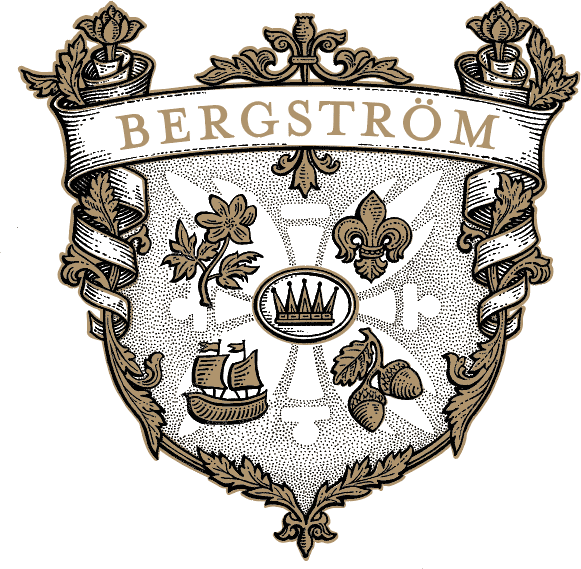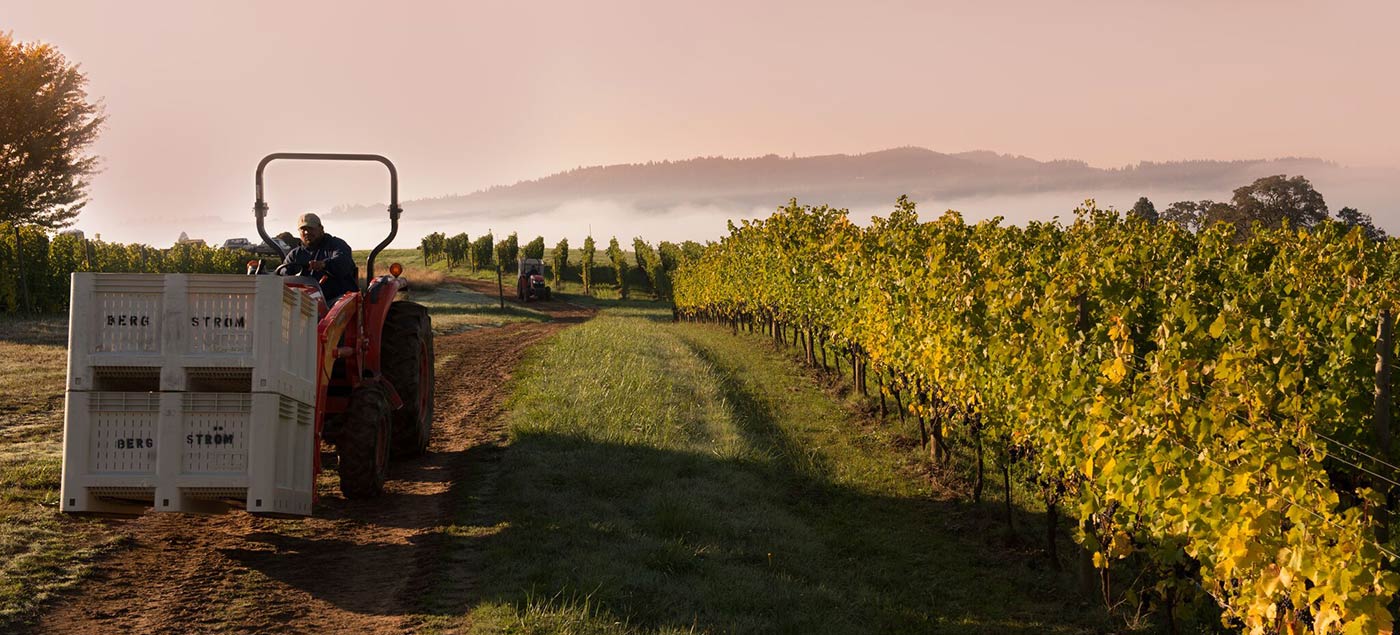After having enjoyed a few weeks in our apartment tucked away in the ancient ramparts of the city of Beaune, we decided to change up the scenery. Our next week in France found us leaving the Burgundy area and driving South down the A-6 autoroute through Lyon and into the Rhone Valley. Our destination was Provence and an exploration into the grape varietals of Grenache, Syrah and Mourvedre: the holy Rhone triumvirate as far as red wines are concerned. I planned on visiting a specialist of each of these varietals and a few people who blended them together.
I have long been an admirer of the Rhone wines with their aromas of olives and garrigue and blue and black fruits. So different from Pinot Noir and yet, when carefully crafted, so similar in its elegance and perfume and expression. Some people call Grenache the “Pinot of the South.” And I believe that when Pinot Noir is very ripe can display characters not to dissimilar to Syrah. Mourvedre has a distinct wild animal character to it. The three of these separately make fantastic wines all worth seeking out from the best terroirs and the best producers. But together, as a blend (think Chateauneuf du Pape), they can become a mind boggling concoction.
We found our home base for exploring the area in the Costiere des Nimes appellation which is located not far from the ocean and sandwiched between the ancient Roman towns of Nimes and Arles, just south of Avignon and just north of La Camargue where wild horses and pink flamingos mingle in the Mediterranean’s ocean inlets and meadow sanctuaries. Here the cicadas, or “cigalles” sing all day long under the blistering sunshine and the breeze smells of lavendar and olive and rosemary. The soil is hard to see through the large rolled quartz cobblestones, the kind that made Chateauneuf du Pape so famous, and we were just one hour south of there. This area of France is rich with history and although not perfectly situated for the domaines we wanted to visit, was a perfect backdrop to enjoying Provence in general as it is freckled with wine domaines and country houses who are eager to rent rooms or entire chateaux to travelers looking for something outside of the usual hotel experience.
Our first vinous objective took us back up the Autoroute about 2 hours north to Valence and then a hard left over the Rhone river and up the banks through St. Peray to the little town of Cornas. Visiting the Rhone Valley without a stop at Domaine Clape in Cornas would be unthinkable. This is one of my favorite Syrah producers in the world. Domaine Clape is widely known and appreciated as one of the finest producers of Syrah in France. Robert Parker’s Wine Advocate has anointed their wines with perfect 100 point scores several times. Their importer Kermit Lynch has this to say about the winegrowing family: “In the world of wine, there are many good winegrowers. However, there are only a very select few who are truly great, and Auguste Clape is among them. Critics and connoisseurs alike all agree that he is one of the greatest pioneers of the Northern Rhône, and his Syrahs from the cru of Cornas are among the most celebrated wines of France.” Simply put, these are stunning wines of tremendous complexity. I go out of my way to find and collect and taste these wines.
I was greeted at the domaine by Olivier Clape, son of Pierre-Marie Clape and grandson of the famous patriarch Auguste Clape. Olivier is about my age, I would guess, and about my size and build, I would figure. There was no sign at the winery, no grandiose entrance or gate, not even the resemblance of a winery really, more like a long white building with many doors and garage doors with very few windows (kind of like an apartment building) and you had to look closely at the small piece of paper next to the doorbell which simply said: “CLAPE.” Inside the door it all started making sense. There were tanks and a bottling machine and equipment spread about the floor and there were pictures of the vineyards which you could not see from town as they lay high above us tucked away and perched on the hillside cliff terraces of the appellation. Olivier grabbed two glasses and about $1000. worth of wine (5 bottles ) and we descended into the cave via old stock elevator.
Once downstairs, I was blown away. The Clape cave is one of the most enchanting places I have ever been as a winemaker. Not because it was built by a Duke or a King or even a monk in some far away century, but because it was the moldiest, fuzziest most perfectly dank cellar I have ever been in and there was not a single small barrel in sight. The Clapes only use foudres for the aging of their Syrahs. Foudres are oval oak casks of varying sizes. Foudres ranging anywhere from 5-barrels in size to 15-barrels in size lined the cellar on both walls.
They were old and gnarly looking, like ancient boats with barnacles you would find in a maritime museum, with distinct character each of them, much like the individual precious cuvees of wine they held inside. We proceeded to taste through the foudres (2012 and 2011 vintages) all the way from their “Cotes du Rhone” wines at the entry-level to their “Renaissance” selection wines and finally through the several components of the mighty “Cornas” appellation wine. Then we dove straight into the finished bottles of the same appellations and names from 2010, 2007, 2002 and even 1989.
The Clape wines are fermented with 100% cluster inclusion (whole cluster) which means that they do not de-stem their fruit prior to maceration and fermentation. This is how wines were made for centuries before the invention of the destemming machine. With this technological advance came more modern styled wines that focused more on fruit and sweetness and less on the savory dimension of wines. I am a big fan of the whole cluster style regardless of producer around the world. Some of my favorite wines in the Pinot and Syrah world include their stems and whole bunches in their fermentation tank: Domaine Dujac and Romanee Conti in Burgundy and Cristom in Oregon come to mind. This style of wine, when young, does offer more savory notes including aromas and flavors such as olive and rosemary or other garden herbs. A lot of times these young whole cluster wines make me crave pizza because of their potential for a perfect mingling of high toned fruit aromas (similar to tomato) and savoriness and sometimes even a salty or saline character. But as the wines age there is a mid-palate sweetness and a perfume that adds a third dimension to wine that I find very beguiling.
What whole cluster does at Clape is it helps to balance out the intensely concentrated dark fruit characters that they can get from these hillside cliff vineyards and small yields. The stems add intrigue to the wines when young as well as structure and mid-palate but with age the stems keep the wines fresh and balanced. It is rare in the wine world to see wines with alcohols in the high 14% (and even low 15% in rare vintages) to maintain freshness and seemingly become more balanced with age. But that is what happens chez Clape and I was thrilled to try some older wines to experience this phenomenon first hand with my own eyes and tastebuds. I was honored to be able to step foot into the Clape’s cave and have two hours of Olivier’s precious time. I emerged out of the dank cave into the bright hot light of that small street in Cornas I got into our rental car where Caroline and the boys had been patiently waiting and as they said: “There is absolutely nothing to do in Cornas….. and…… eeewwww you reek of mold!” I smiled and thought about how many more whole cluster fermentations I am going to do this harvest.







